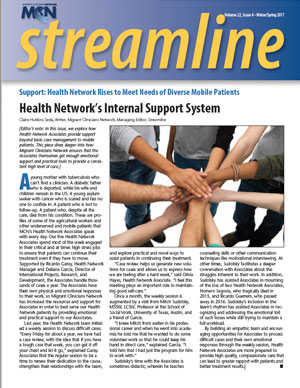Edging Toward a Ban, Chlorpyrifos is Once Again Demonstrated to be Dangerous to Human Health

Chlorpyrifos is a neurotoxin that is used as an insecticide on millions of acres across the US. It’s also the subject of a newly updated Environmental Protection Agency (EPA) assessment, released at the end of last year, which concludes that the current safety standards are not sufficient to protect anyone exposed -- including the consumers of contaminated food and water, the rural residents adjacent to treated fields, and the pesticide handlers -- from the myriad of health concerns that result from even very low levels of exposure.
“We are concerned that safe levels of chlorpyrifos in the diet may be exceeded based on current chlorpyrifos uses,” the EPA’s assessment announcement page says. (Find a link to the assessment in Resources, below.)The full assessment notes: “The revised analysis indicates that expected residues of chlorpyrifos on most individual food crops exceed the ‘reasonable certainty of no harm’ safety standard under the Federal Food, Drug, and Cosmetic Act (FFDCA). In addition, the majority of estimated drinking water exposures from currently registered uses, including water exposures from non-food uses, continue to exceed safe levels even taking into account more refined drinking water exposures.” The assessment also concludes that agricultural workers who apply the chemical adhering to all safety and protective precautions are still exposed to chlorpyrifos at a level deemed unsafe by the EPA.
The assessment includes summaries of research indicating that very low-level prenatal exposure to chlorpyrifos is correlated with brain development disruption including a decrease in IQ, attention deficit disorders, working memory issues, and developmental delays. Chlorpyrifos is identified as an acetylcholinesterase inhibitor, which reduces the transmission of signals through the nervous system. The assessment summarizes some of the numerous studies on the health risks of exposure to chlorpyrifos, including epidemiology studies in mothers and children. Several scenarios are evaluated including dietary exposure via drinking water and via food, 21-day residential exposures for children, youth, and women, 21-day residential exposure for young children, and more. They outline real-life versions of the scenarios -- for example, a golfer on treated turf might have exposure to chlorpyrifos for four hours each day.
The updated assessment comes on the eve of an expected ban on the chemical, the result of a decade-long effort in the courts. In 2001, the EPA banned chlorpyrifos for use in homes, citing developmental harm to children, but it continued to be used heavily in the fields. In 2007, Pesticide Action Network North America joined the Natural Resources Defense Council and Earthjustice to petition the EPA to ban all uses of chlorpyrifos, based on studies that demonstrated that very low level exposure had serious neurological consequences for children. In 2014, the EPA completed its initial health risk assessment, concluding that children were in fact at risk. It also covered the wide range of health concerns faced by agricultural workers and rural communities as a result of application, drift, and contaminated water. In 2015, the Ninth Circuit Court of Appeals directed the agency to act on the 2007 petition, which has resulted in this updated assessment and a proposal to ban chlorpyrifos. The EPA is expected to make a final decision in the coming months; the Ninth Circuit Court provided a deadline of March 31, 2017.
The chemical, banned for indoor use but still pervasive in agriculture, is used to control insects on a wide variety of food crops including aphids on soybeans, scale insects on citrus, mealybugs on wine grapes, twig borers and ants in almond orchards and codling moths in walnut orchards. It’s also used extensively on non-food crops like cotton and Christmas trees.
Chlorpyrifos is one of many pesticides used in agriculture that has been demonstrated to have serious human health effects. As clinicians, we treat agricultural workers or members of their families, a patient population that is the most overexposed population to pesticides. Signs of acute exposure such as headaches, nausea, and vomiting are easily misdiagnosed. (See the EPA’s manual entitled “Recognition and Management of Pesticide Poisonings, 6th ed.”, for more: https://goo.gl/d2Cay8.) Also, most clinicians are not aware that in most states they are required to report confirmed and suspected cases of pesticide exposure. Consistent reporting provides health authorities with important data on pesticide exposure trends. The interactive Pesticide Reporting Map, created by Migrant Clinicians Network and Farmworker Justice, gives state-by-state reporting requirements and how-tos: https://goo.gl/ttknSD .
Resources
- Access more of MCN’s pesticide resources, including our popular bilingual comic books and plenty of clinical tools, at https://goo.gl/qxdLSL.
- Read the EPA’s updated assessment at: https://goo.gl/OUVgxb.
- Learn more about the petition to ban chlorpyrifos at: http://earthjustice.org/healthy-communities/toxic-chemicals/
Read this article in the Spring 2017 issue of Streamline here!
Sign up for our eNewsletter to receive bimonthly news from MCN, including announcements of the next Streamline.
Return to the Streamline Spring 2017 Table of Contents.
